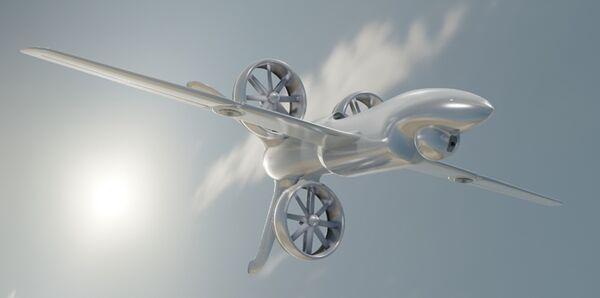
A render of a notional ANCILLARY design. (DARPA)
The US Defense Advanced Research Projects Agency (DARPA) is planning to apply innovation and technology from the commercial electric vertical take-off and landing (eVTOL) sector to a next-generation VTOL unmanned aircraft system (UAS).
DARPA's AdvaNced airCraft Infrastructure-Less Launch And RecoverY (ANCILLARY) X-Plane programme intends to develop and flight-demonstrate critical technologies required for a ‘leap ahead' in low-weight, high-payload, long-endurance VTOL capabilities. The eventual objective is to build a tactical UAS that can operate from ship flight decks and small austere land locations in adverse weather without launch-and-recovery equipment.
Announcing the launch of the ANCILLARY research and development programme, DARPA's Tactical Technology Office said on 7 September that it was planning to tap into the “large non-traditional commercial industry base [which] has fuelled recent VTOL research investments and advanced controls, leading to innovative vehicle configurations spanning size, weight, power, and cost”. “Advancements in small propulsion systems, high-capacity low-weight batteries, fuel cells, materials, electronics, and low-cost additive manufacturing can now enable new architectures and designs to be explored in this trade space,” it added.
DARPA intends that the ANCILLARY air vehicle should be a Group 3 type of between 250 and 330 lb (113.4–149.7 kg) in weight. As well as the ability for launch and recovery without infrastructure, other primary design objectives include extended endurance and range, a high payload-to-weight ratio at tactical scale, and robust flight controls and relative navigation. The low weight/small form factor of ANCILLARY is intended to enable multiple aircraft to be stored and operated from a single ship, enabling the creation of a tactical beyond-line-of-sight multi-intelligence sensor network capability.
Looking to read the full article?
Gain unlimited access to Janes news and more...







